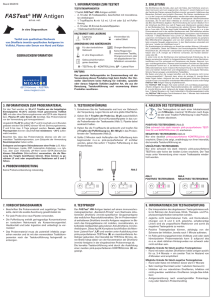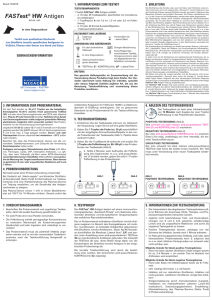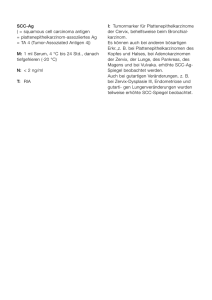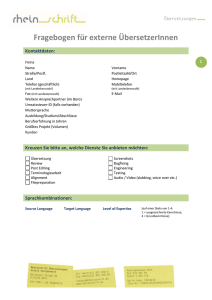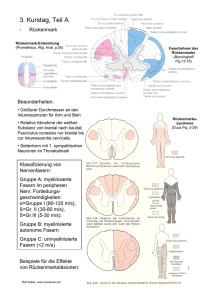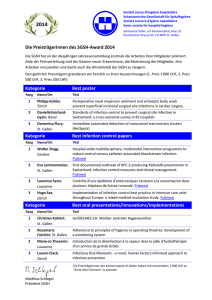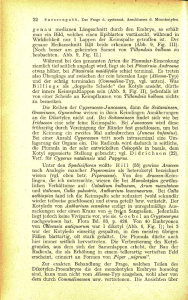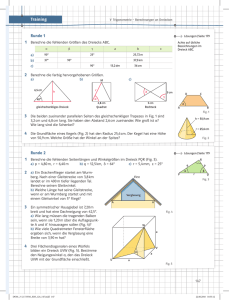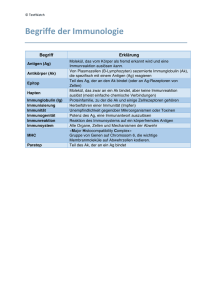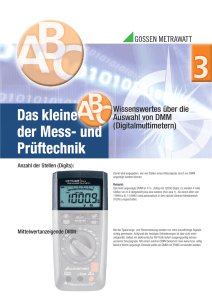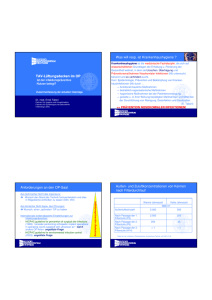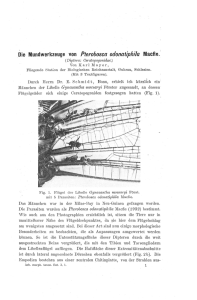FASTest® FeLV LabSet - MEGACOR Diagnostik GmbH
Werbung
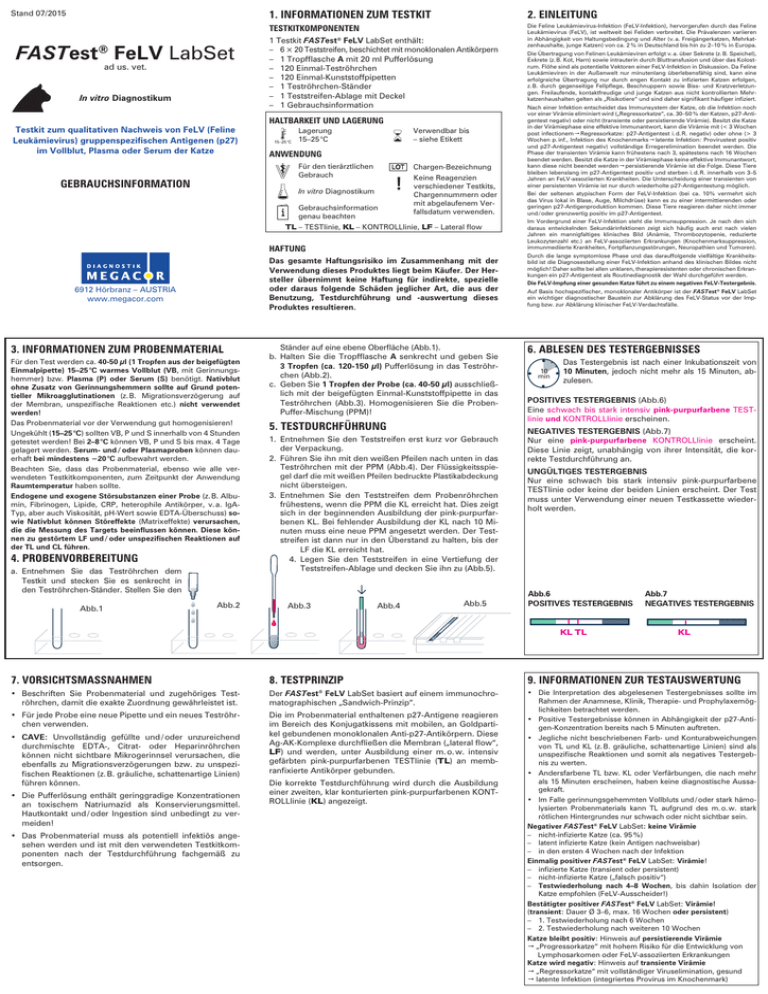
Stand 07/2015 FASTest® FeLV LabSet ad us. vet. In vitro Diagnostikum Testkit zum qualitativen Nachweis von FeLV (Feline Leukämievirus) gruppenspezifischen Antigenen (p27) im Vollblut, Plasma oder Serum der Katze 1. INFORMATIONEN ZUM TESTKIT 2. EINLEITUNG TESTKITKOMPONENTEN Die Feline Leukämievirus-Infektion (FeLV-Infektion), hervorgerufen durch das Feline Leukämievirus (FeLV), ist weltweit bei Feliden verbreitet. Die Prävalenzen variieren in Abhängigkeit von Haltungsbedingung und Alter (v. a. Freigängerkatzen, Mehrkatzenhaushalte, junge Katzen) von ca. 2 % in Deutschland bis hin zu 2–10 % in Europa. 1 Testkit FASTest FeLV LabSet enthält: – 6 × 20 Teststreifen, beschichtet mit monoklonalen Antikörpern – 1 Tropfflasche A mit 20 ml Pufferlösung – 120 Einmal-Teströhrchen – 120 Einmal-Kunststoffpipetten – 1 Teströhrchen-Ständer – 1 Teststreifen-Ablage mit Deckel – 1 Gebrauchsinformation ® HALTBARKEIT UND LAGERUNG 15–25 °C Verwendbar bis – siehe Etikett Lagerung 15–25 °C ANWENDUNG Für den tierärztlichen Gebrauch GEBRAUCHSINFORMATION LOT ! In vitro Diagnostikum Gebrauchsinformation genau beachten Chargen-Bezeichnung Keine Reagenzien verschiedener Testkits, Chargennummern oder mit abgelaufenem Verfallsdatum verwenden. TL – TESTlinie, KL – KONTROLLlinie, LF – Lateral flow HAFTUNG Das gesamte Haftungsrisiko im Zusammenhang mit der Verwendung dieses Produktes liegt beim Käufer. Der Hersteller übernimmt keine Haftung für indirekte, spezielle oder daraus folgende Schäden jeglicher Art, die aus der Benutzung, Testdurchführung und -auswertung dieses Produktes resultieren. 6912 Hörbranz – AUSTRIA www.megacor.com 3. INFORMATIONEN ZUM PROBENMATERIAL Für den Test werden ca. 40-50 µl (1 Tropfen aus der beigefügten Einmalpipette) 15–25 °C warmes Vollblut (VB, mit Gerinnungshemmer) bzw. Plasma (P) oder Serum (S) benötigt. Nativblut ohne Zusatz von Gerinnungshemmern sollte auf Grund potentieller Mikroagglutinationen (z. B. Migrationsverzögerung auf der Membran, unspezifische Reaktionen etc.) nicht verwendet werden! Das Probenmaterial vor der Verwendung gut homogenisieren! Ungekühlt (15–25 °C) sollten VB, P und S innerhalb von 4 Stunden getestet werden! Bei 2–8 °C können VB, P und S bis max. 4 Tage gelagert werden. Serum- und / oder Plasmaproben können dauerhaft bei mindestens −20 °C aufbewahrt werden. Beachten Sie, dass das Probenmaterial, ebenso wie alle verwendeten Testkitkomponenten, zum Zeitpunkt der Anwendung Raumtemperatur haben sollte. Endogene und exogene Störsubstanzen einer Probe (z. B. Albumin, Fibrinogen, Lipide, CRP, heterophile Antikörper, v. a. IgATyp, aber auch Viskosität, pH-Wert sowie EDTA-Überschuss) sowie Nativblut können Störeffekte (Matrixeffekte) verursachen, die die Messung des Targets beeinflussen können. Diese können zu gestörtem LF und / oder unspezifischen Reaktionen auf der TL und CL führen. 4. PROBENVORBEREITUNG a. Entnehmen Sie das Teströhrchen dem Testkit und stecken Sie es senkrecht in den Teströhrchen-Ständer. Stellen Sie den Abb.1 Abb.2 Ständer auf eine ebene Oberfläche (Abb.1). b. Halten Sie die Tropfflasche A senkrecht und geben Sie 3 Tropfen (ca. 120-150 µl) Pufferlösung in das Teströhrchen (Abb.2). c. Geben Sie 1 Tropfen der Probe (ca. 40-50 µl) ausschließlich mit der beigefügten Einmal-Kunststoffpipette in das Teströhrchen (Abb.3). Homogenisieren Sie die ProbenPuffer-Mischung (PPM)! 5. TESTDURCHFÜHRUNG 1. Entnehmen Sie den Teststreifen erst kurz vor Gebrauch der Verpackung. 2. Führen Sie ihn mit den weißen Pfeilen nach unten in das Teströhrchen mit der PPM (Abb.4). Der Flüssigkeitsspiegel darf die mit weißen Pfeilen bedruckte Plastikabdeckung nicht übersteigen. 3. Entnehmen Sie den Teststreifen dem Probenröhrchen frühestens, wenn die PPM die KL erreicht hat. Dies zeigt sich in der beginnenden Ausbildung der pink-purpurfarbenen KL. Bei fehlender Ausbildung der KL nach 10 Minuten muss eine neue PPM angesetzt werden. Der Teststreifen ist dann nur in den Überstand zu halten, bis der LF die KL erreicht hat. 4. Legen Sie den Teststreifen in eine Vertiefung der Teststreifen-Ablage und decken Sie ihn zu (Abb.5). Abb.3 Abb.4 Abb.5 Die Übertragung von Felinen Leukämieviren erfolgt v. a. über Sekrete (z. B. Speichel), Exkrete (z. B. Kot, Harn) sowie intrauterin durch Bluttransfusion und über das Kolostrum. Flöhe sind als potentielle Vektoren einer FeLV-Infektion in Diskussion. Da Feline Leukämieviren in der Außenwelt nur minutenlang überlebensfähig sind, kann eine erfolgreiche Übertragung nur durch engen Kontakt zu infizierten Katzen erfolgen, z. B. durch gegenseitige Fellpflege, Beschnuppern sowie Biss- und Kratzverletzungen. Freilaufende, kontaktfreudige und junge Katzen aus nicht kontrollierten Mehrkatzenhaushalten gelten als „Risikotiere“ und sind daher signifikant häufiger infiziert. Nach einer Infektion entscheidet das Immunsystem der Katze, ob die Infektion noch vor einer Virämie eliminiert wird („Regressorkatze“, ca. 30–50 % der Katzen, p27-Antigentest negativ) oder nicht (transiente oder persistierende Virämie). Besitzt die Katze in der Virämiephase eine effektive Immunantwort, kann die Virämie mit (< 3 Wochen post infectionem Regressorkatze: p27-Antigentest i. d. R. negativ) oder ohne (> 3 Wochen p. inf., Infektion des Knochenmarks latente Infektion: Provirustest positiv und p27-Antigentest negativ) vollständige Erregerelimination beendet werden. Die Phase der transienten Virämie kann frühestens nach 3, spätestens nach 16 Wochen beendet werden. Besitzt die Katze in der Virämiephase keine effektive Immunantwort, kann diese nicht beendet werden persistierende Virämie ist die Folge. Diese Tiere bleiben lebenslang im p27-Antigentest positiv und sterben i. d. R. innerhalb von 3–5 Jahren an FeLV-assoziierten Krankheiten. Die Unterscheidung einer transienten von einer persistenten Virämie ist nur durch wiederholte p27-Antigentestung möglich. Bei der seltenen atypischen Form der FeLV-Infektion (bei ca. 10% vermehrt sich das Virus lokal in Blase, Auge, Milchdrüse) kann es zu einer intermittierenden oder geringen p27-Antigenproduktion kommen. Diese Tiere reagieren daher nicht immer und / oder grenzwertig positiv im p27-Antigentest. Im Vordergrund einer FeLV-Infektion steht die Immunsuppression. Je nach den sich daraus entwickelnden Sekundärinfektionen zeigt sich häufig auch erst nach vielen Jahren ein mannigfaltiges klinisches Bild (Anämie, Thrombozytopenie, reduzierte Leukozytenzahl etc.) an FeLV-assoziierten Erkrankungen (Knochenmarksuppression, immunmediierte Krankheiten, Fortpflanzungsstörungen, Neuropathien und Tumoren). Durch die lange symptomlose Phase und das darauffolgende vielfältige Krankheitsbild ist die Diagnosestellung einer FeLV-Infektion anhand des klinischen Bildes nicht möglich! Daher sollte bei allen unklaren, therapieresistenten oder chronischen Erkrankungen ein p27-Antigentest als Routinediagnostik der Wahl durchgeführt werden. Die FeLV-Impfung einer gesunden Katze führt zu einem negativen FeLV-Testergebnis. Auf Basis hochspezifischer, monoklonaler Antikörper ist der FASTest® FeLV LabSet ein wichtiger diagnostischer Baustein zur Abklärung des FeLV-Status vor der Impfung bzw. zur Abklärung klinischer FeLV-Verdachtsfälle. 6. ABLESEN DES TESTERGEBNISSES 10 min Das Testergebnis ist nach einer Inkubationszeit von 10 Minuten, jedoch nicht mehr als 15 Minuten, abzulesen. POSITIVES TESTERGEBNIS (Abb.6) Eine schwach bis stark intensiv pink-purpurfarbene TESTlinie und KONTROLLlinie erscheinen. NEGATIVES TESTERGEBNIS (Abb.7) Nur eine pink-purpurfarbene KONTROLLlinie erscheint. Diese Linie zeigt, unabhängig von ihrer Intensität, die korrekte Testdurchführung an. UNGÜLTIGES TESTERGEBNIS Nur eine schwach bis stark intensiv pink-purpurfarbene TESTlinie oder keine der beiden Linien erscheint. Der Test muss unter Verwendung einer neuen Testkassette wiederholt werden. Abb.6 POSITIVES TESTERGEBNIS KL TL Abb.7 NEGATIVES TESTERGEBNIS KL 7. VORSICHTSMASSNAHMEN 8. TESTPRINZIP 9. INFORMATIONEN ZUR TESTAUSWERTUNG • Beschriften Sie Probenmaterial und zugehöriges Teströhrchen, damit die exakte Zuordnung gewährleistet ist. Der FASTest® FeLV LabSet basiert auf einem immunochromatographischen „Sandwich-Prinzip“. • Für jede Probe eine neue Pipette und ein neues Teströhrchen verwenden. Die im Probenmaterial enthaltenen p27-Antigene reagieren im Bereich des Konjugatkissens mit mobilen, an Goldpartikel gebundenen monoklonalen Anti-p27-Antikörpern. Diese Ag-AK-Komplexe durchfließen die Membran („lateral flow“, LF) und werden, unter Ausbildung einer m. o. w. intensiv gefärbten pink-purpurfarbenen TESTlinie (TL) an membranfixierte Antikörper gebunden. • Die Interpretation des abgelesenen Testergebnisses sollte im Rahmen der Anamnese, Klinik, Therapie- und Prophylaxemöglichkeiten betrachtet werden. • Positive Testergebnisse können in Abhängigkeit der p27-Antigen-Konzentration bereits nach 5 Minuten auftreten. • Jegliche nicht beschriebenen Farb- und Konturabweichungen von TL und KL (z. B. gräuliche, schattenartige Linien) sind als unspezifische Reaktionen und somit als negatives Testergebnis zu werten. • Andersfarbene TL bzw. KL oder Verfärbungen, die nach mehr als 15 Minuten erscheinen, haben keine diagnostische Aussagekraft. • Im Falle gerinnungsgehemmten Vollbluts und / oder stark hämolysierten Probenmaterials kann TL aufgrund des m. o. w. stark rötlichen Hintergrundes nur schwach oder nicht sichtbar sein. Negativer FASTest® FeLV LabSet: keine Virämie – nicht-infizierte Katze (ca. 95 %) – latent infizierte Katze (kein Antigen nachweisbar) – in den ersten 4 Wochen nach der Infektion Einmalig positiver FASTest® FeLV LabSet: Virämie! – infizierte Katze (transient oder persistent) – nicht-infizierte Katze („falsch positiv“) – Testwiederholung nach 4–8 Wochen, bis dahin Isolation der Katze empfohlen (FeLV-Ausscheider!) Bestätigter positiver FASTest® FeLV LabSet: Virämie! (transient: Dauer Ø 3–6, max. 16 Wochen oder persistent) – 1. Testwiederholung nach 6 Wochen – 2. Testwiederholung nach weiteren 10 Wochen Katze bleibt positiv: Hinweis auf persistierende Virämie „Progressorkatze“ mit hohem Risiko für die Entwicklung von Lymphosarkomen oder FeLV-assoziierten Erkrankungen Katze wird negativ: Hinweis auf transiente Virämie „Regressorkatze“ mit vollständiger Viruselimination, gesund latente Infektion (integriertes Provirus im Knochenmark) • CAVE: Unvollständig gefüllte und / oder unzureichend durchmischte EDTA-, Citrat- oder Heparinröhrchen können nicht sichtbare Mikrogerinnsel verursachen, die ebenfalls zu Migrationsverzögerungen bzw. zu unspezifischen Reaktionen (z. B. gräuliche, schattenartige Linien) führen können. • Die Pufferlösung enthält geringgradige Konzentrationen an toxischem Natriumazid als Konservierungsmittel. Hautkontakt und / oder Ingestion sind unbedingt zu vermeiden! • Das Probenmaterial muss als potentiell infektiös angesehen werden und ist mit den verwendeten Testkitkomponenten nach der Testdurchführung fachgemäß zu entsorgen. Die korrekte Testdurchführung wird durch die Ausbildung einer zweiten, klar konturierten pink-purpurfarbenen KONTROLLlinie (KL) angezeigt. Version 07/2015 FASTest® FeLV LabSet ad us. vet. In vitro diagnosticum Test-kit for the qualitative detection of FeLV (Feline Leukaemia Virus) group specific antigens (p27) in the whole blood, plasma or serum of the cat 1. INFORMATION ON THE TEST-KIT 2. INTRODUCTION TEST-KIT COMPONENTS The infection with Feline Leukaemia Virus (FeLV) occurs worldwide in felids. The prevalence ranges from 2 % in Germany to 2–10 % in Europe, dependent on keeping conditions and age (especially stray cats, day release cats, multiple cat households and young cats). 1 test-kit FASTest FeLV LabSet contains: – 6 × 20 dipsticks, coated with monoclonal antibodies – 1 dropper bottle A with 20 ml buffer diluent – 120 disposable test tubes – 120 disposable plastic pipettes – 1 test tube rack – 1 dipstick rack with cover – 1 instructions for use ® STABILITY AND STORAGE 15–25 °C Expiry date – see label Store at 15–25 °C APPLICATION For veterinary use only INSTRUCTIONS FOR USE The infection with Feline Leukaemia Viruses is transmitted most of all by secretions (e.g. saliva), excretions (e.g. feces, urine) as well as intrauterine by blood transfusion and via colostrum. Flees also are discussed as potential vectors of FeLV infection. As FeLV can survive in the environment only for minutes, successful contamination only can happen during close contact to infected cats, e.g. mutual grooming, sniffing as well as injuries through biting and scratching. Day release, sociable and young cats from uncontrolled multiple cat households are regarded as “risk animals” with significantly higher infection rates. LOT Lot number ! Do not use test-kit components from different kits, lot numFollow instructions for bers or beyond stated use precisely expiry date. TL – TEST line, CL – CONTROL line, LF – Lateral flow In vitro diagnosticum 6912 Hörbranz – AUSTRIA www.megacor.com 3. INFORMATION ON THE SPECIMEN MATERIAL Approximately 40–50 µl (1 drop of attached plastic pipette) 15– 25 °C warm whole blood (WB, with anticoagulant), plasma (P) or serum (S) are needed. Native blood without anticoagulant should not be used due to potential micro agglutination (e. g. migration delay on the membrane, unspecific reaction)! Mix the sample material well before use! Non-cooled (15–25 °C), WB, P and S should be tested within 4 hours! At 2–8 °C, WB, P and S can be stored up to 4 days. Serum and / or plasma samples can be permanently stored at minimum −20 °C. Keep in mind that the sample material, as well as all used test-kit components, should have reached room temperature at the time of application. Endogeneous and exogeneous interfering substances of the sample (e. g. albumin, fibrinogen, lipids, CRP, heterophilic antibodies, especially type IgA, as well as viscosity, pH-value and excess EDTA) as well as native blood can cause interferences (matrix effects) that can influence the target measurement. These can lead to an impaired LF and / or unspecific reactions on the TL and CL. 4. SPECIMEN COLLECTION AND PREPARATION After an infection, for the immune system of the cat it is crucial whether the infection gets eliminated prior to viraemia (“regressor cat”, ca. 30 to 50 % of the cats, p27 antigen test negative) or not (transient or persistent viraemia). With an effective immune response during viraemia, the viraemia can be finished with (< 3 weeks post infection “regressor cat”: p27 antigen test generally negative) or without (> 3 weeks p. inf., infection of bone marrow latent infection: provirus test positive and p27 antigen test negative) complete elimination of the virus. The period of transient viraemia can be finished earliest after 3, latest after 16 weeks. Without an effective immune response, the viraemia cannot be terminated leading to a persisting viraemia. These animals remain positive in the p27 antigen test through life time and usually die of FeLV associated diseases within 3–5 years. The differentiation between transient and persistent viraemia only is possible by means of repeated p27 antigen testing. In the occasional, atypical variant of FeLV infection (ca. 10 %, the virus locally proliferates in bladder, eye, mammary gland), intermittent or slight p27 antigen production is possible. Therefore, these animals are not always and / or marginally positive in p27 antigen testing. LIABILITY The most important feature of FeLV infection is the immune suppression. Due to consequent secondary infections, diverse clinical symptoms (anaemia, thrombocytopenia, reduced number of leukocytes etc.) of FeLV associated diseases (bone marrow suppression, immune mediated diseases, reproduction malfunction, neuropathies and tumours) often manifest only after several years. The entire risk due to the performance of this product is assumed by the purchaser. The manufacturer shall not be liable for indirect, special or consequential damages of any kind resulting from the use of this product. Owing to the long asymptomatic period and the following diverse clinical symptoms, diagnosis of FeLV infection exclusively by clinical symptoms is not possible! Therefore, for all indistinct, therapy resistant or chronic diseases, p27 antigen testing shall be done as routine method of choice. The vaccination of a healthy cat against FeLV will lead to a negative FeLV test result. b. Hold the dropper-bottle A vertically and add 3 drops (ca. 120–150 µl) of buffer solution into the test tube (fig.2). c. Add 1 drop of the sample (ca. 40–50 µl) only with the attached disposable plastic pipette into the test tube (fig.3). Homogenize the sample-buffer mixture (SBM)! 5. TEST PROCEDURE 1. Remove the dipstick from its foil pouch shortly before use. 2. Introduce the dipstick vertically and with the arrows pointing downwards into the sample tube for min. 1 minute. The liquid level must not exceed the white plastic cover with the arrows (fig.4). 3. Remove the dipstick from sample tube soonest the SBM has reached the CL. If so, the pink-purple CL will appear slowly but surely. If the CL will not appear after 10 minutes, a new SBM must be prepared. The dipstick must be held only in the supernatant until the LF has reached the CL. Based on highly specific monoclonal antibodies, FASTest® FeLV LabSet is an important diagnostic tool for the evaluation of FeLV status before vaccination and of clinical suspicious cats, respectively. 6. READING OF THE TEST RESULT 10 min Read the test result after 10 minutes, but no more than 15 minutes. POSITIVE TEST RESULT (fig.4) A weak to strong and well-defined pink-purple coloured TEST line and CONTROL line appear. NEGATIVE TEST RESULT (fig.5) Only a pink-purple CONTROL line appears. This line indicates, irrespective of its intensity, that the test has been performed properly. INVALID TEST RESULT Only a weak to strong and well-defined pink-purple TEST line or no line at all appears. The test should be repeated using a new test cassette. 4. Place the dipstick into a deepening of the dipstick rack and cover it (fig.5). a. Remove the sample tube from the test-kit. Place it vertically into the test tube rack (fig.1). fig.1 fig.2 fig.3 fig.4 fig.5 fig.6 POSITIVE TEST RESULT CL TL fig.7 NEGATIVE TEST RESULT CL 7. PRECAUTIONS FOR USERS 8. TEST PRINCIPLE 9. INFORMATION FOR THE INTERPRETATION • Label sample material and associated sample tube to ensure a precise assignment. The FASTest® FeLV LabSet is based on a immunochromatographic “sandwich principle” technique. • Use a new pipette and a new sample tube for each sample. The p27 antigens of the sample react with mobile monoclonal anti-p27 antibodies in the conjugate pad area, which are bound to gold particles. Migrating (“lateral flow”, LF) along the nitrocellulose membrane, these specific antigenantibody complexes are bound by fixed antibodies producing a more or less intensive pink-purple TEST line (TL). • The interpretation of the test result should always be based on anamnestic and clinical data as well as the therapy and prophylaxis possibilities. • Positive test results may be observed in as short as 5 minutes depending on the p27 antigen concentration of the sample. • Any non-described colour or contour variation of TL and CL (e. g. greyish, shadow-like lines) has to be considered as unspecific reactions and therefore as negative test result. • Any colour variations of TL and CL or discolourations appearing after more than 15 minutes do not have any diagnostic value. • Due to anticoagulated whole blood and / or red hemoglobin background of the test membrane, caused by hemolytic blood samples, the visibility of TL, especially in case of weak positive samples, could be from worse to not visible. Negative FASTest® FeLV LabSet: no viraemia – non-infected cat (ca. 95 %) – latent infected cat (no antigen detectable) – in the first 4 weeks after infection Single positive FASTest® FeLV LabSet: viraemia! – infected cat (transient or persistent) – non-infected cat (“false positive”) – test repetition after 4–8 weeks, during this time isolation of the cat is recommended (FeLV sheeding!) Confirmed positive FASTest® FeLV LabSet: viraemia! (transient: period Ø 3–6, max. 16 weeks or persistent) – 1st test repetition after 6 weeks – 2nd test repetition after another 10 weeks Cat still positive: indicates a persistent viraemia “progressor cat” with high risk of developing lymphosarcoma or other FeLV associated diseases Cat becomes negative: indicates a transient viraemia “regressor cat” with self-limiting infection, adaequate immune response, healthy cat latent infection (integrated provirus in the bone marrow) • CAVE: Partially filled and / or insufficient mixed EDTA, Citrate or Heparin tubes could create invisible microclots resulting in lateral flow delay and / or unspecific reactions (e. g. greyish shadow like lines). • The buffer diluent contains low concentrations of toxic sodium azide as a preservative, therefore avoid skin contact and / or ingestion. • The sample material must be seen as potentially infectious and disposed of accordingly, together with the used test-kit components. A correct test procedure will be indicated by a second, clearly outlined pink-purple CONTROL line (CL).
